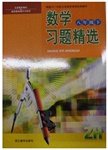题目内容
B [2015 山东潍坊一模]
The poaching, or illegal killing, of rhinos (犀牛)in South Africa is growing worse each year. The government re?cently reported that a record number of rhinos were poached in 2014, a year which had more rhino killings in South Africa than ever before.
The World Wild Fund for Nature ( WWF) says about 20,000 rhinos live in South Africa. 丁hat is more than 80 per cent of the rhinos in the world. Edna Molewa, South Africa's environmental issues minister, says, "During 2014, we are sad to say this, 1 ,215 rhinos were killed. This is a rise in the number of poached rhinos from 1 ,004 in 2013. This is indeed very worrying.,,
The animals are hunted for their horns(角).Many peo?ple in Asia believe the horn has healing power, which drives poachers, at all costs, mad for more horns. But there is no scientific evidence for this belief. The horn is made of kera?tin. That is the same substance as human hair, fingernails and toenails.
Ms Molewa said 386 suspected poachers were arrested last year, an increase from the year before. But rhino protec?tion workers say poachers often go unpunished after arrest. South Africa's legal system is ineffective.
Ms Molewa said more needs to be done and South Africa is taking strong measures to protect rhinos. The efforts in?clude moving some of the animals to secret places in neigh?bouring countries. "Now approximately 100 rhinos have been moved to neighbouring states in the SADC region during 2014 and 200 more rhinos will be moved this year," Molewa said.
Jo Shaw, rhino programme manager at the WWF, said, "We're talking about a loss of a hundred rhinos a month, or more than three a day. We really need to see effective action not just on a national level but internationally. " She said offi?cials should find the criminal groups responsible for the poac?hing and punish them.
Conservationists(自然环境保护主义者)and government officials are to meet in Botswana in March at the Intergovern?mental Conference on Illegal Wildlife Trade. They will talk about ways to stop the trade in rhino horns. That may be the only way to stop the killing of rhinos.
4.What do we know about rhinos?
A. Half of the rhinos live in South Africa.
B. Less than 1,000 rhinos were killed in 2013.
C. The killing reached the highest point in 2014.
D. There are only 20,000 rhinos left in the world.
5.What is the main reason for people to hunt rhinos?
A. To get more keratin.
B. To protect the farmland.
C. To use them for decoration.
D. To make money from horns.
6.Jo Shaw thinks that____________ .
A. many criminal groups are well organized
B. new laws are needed to punish the killers
C. rhino protection needs international cooperation
D. conferences about protecting rhinos are to be held every year
7.What can we infer from the passage?
A. Rhino protection has a long way to go.
B. No one would like to buy horns in the future.
C. The illegal killing of rhinos will soon disappear.
D. Rhinos living in South Africa will be moved to other countries.
B [文章大意]本文主要讲述了在南非偷猎犀牛变得越来越严重, 偷猎者偷猎犀牛是为了卖它们的角赚钱。保护犀牛不仅需要全国的合作,也需要国际的合作。
4.C 推理判断题。根据第一段第二句"The government recently reported that a record number of rhinos were poached in 2014, a year which had more rhino killings in South Africa than ever be?fore." 可知, 在 2014年对犀牛的猎杀到达了历史最高点。故选C项。
5.D 推理判断题。根据第三段的"The animals are hunted for their horns(角).Many people in Asia believe the horn has healing power, which drives poachers, at all costs* mad for more horns."
可知,犀牛被猎杀是因为它们的角。很多人认为犀牛角有治病的功能,这驱使偷猎者不惜任何代价去获得更多的犀牛角,据此推断,偷猎者猎杀犀牛是为了卖犀牛角从而获得金钱。故选I)项。
6.C 细节理解题。根据文中的"'Wc really need to see effective ac?tion not just on a national level but internationally."'可知,Jo Shaw认为保护犀牛不仅需要全国的合作,也需要国际的合作。故选C项。
7.A推理判断题。根据整篇文章的描述可知,对犀牛的猎杀在2014年达到了历史最高值,而且文中提到保护犀牛需要国际的合作,因此保护犀牛任重道远。故选A项。

 习题精选系列答案
习题精选系列答案